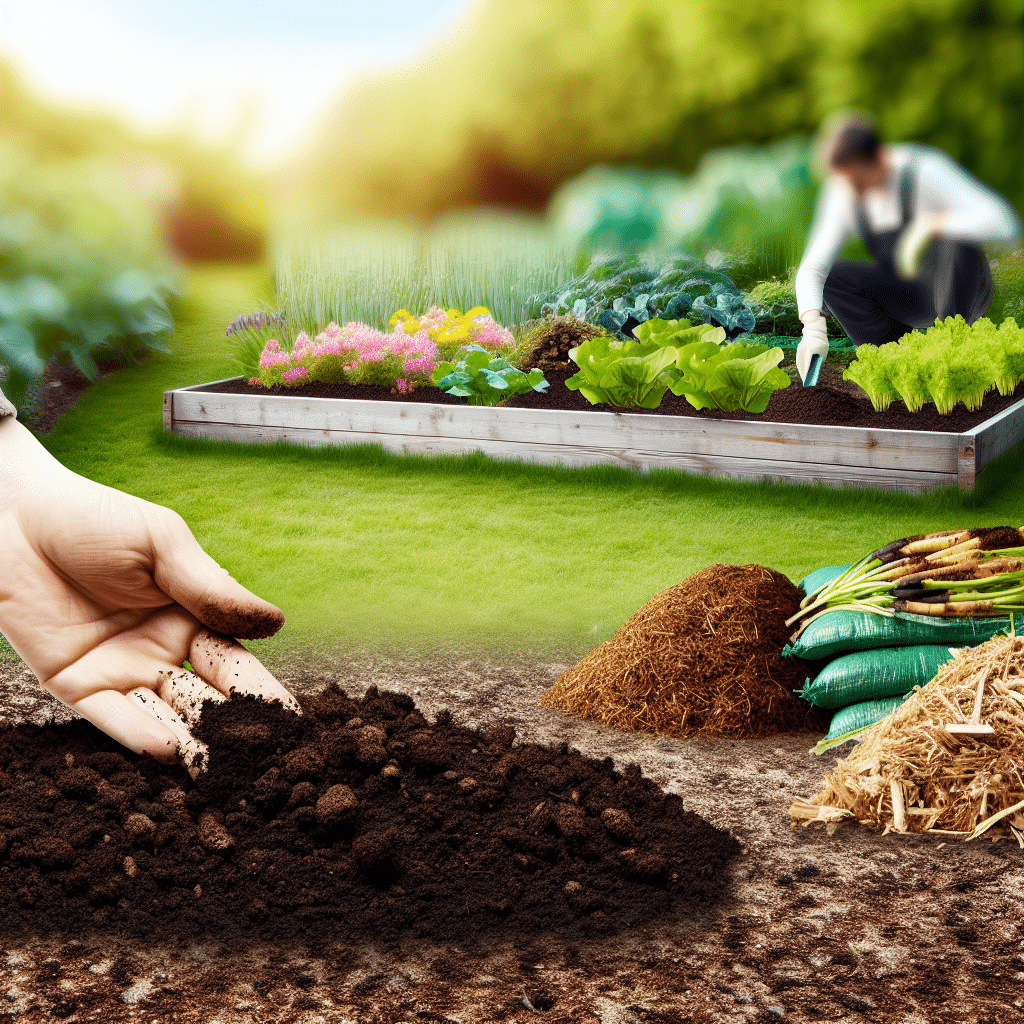Gardening enthusiasts often face the challenge of maintaining healthy soil to ensure robust plant growth. The state of your soil plays a crucial role in gardening success. But how can you improve soil for gardening to create an environment where plants thrive? Let’s dig in!
Why Focus on Soil Health?
Understanding the importance of soil health is the first step in creating a flourishing garden. Healthy soil is rich in nutrients, has good structure, and promotes strong root development. Neglecting soil health can result in poor plant growth, decreased yield, and increased vulnerability to pests and diseases.
How to Improve Soil for Gardening?
To effectively improve soil for gardening, consider these essential strategies:
1. Test Your Soil
Before making any amendments, it’s important to understand the current state of your soil. A soil test will reveal its pH level, nutrient content, and texture. Testing kits are available at garden centers, or you can send samples to a local extension service for a detailed analysis. This information will guide you in selecting the right amendments.
2. Add Organic Matter
Organic matter is the lifeblood of healthy soil. It improves soil structure, enhances nutrient retention, and encourages beneficial microbial activity. Here are some ways to enrich your soil with organic matter:
* **Compost:** Made from decomposed organic materials like vegetable scraps and yard waste, compost is a powerhouse of nutrients.
* **Manure:** Well-rotted animal manure offers a rich source of organic matter and nutrients.
* **Cover Crops:** Planting cover crops like clover or rye during off-seasons can add organic matter and improve soil structure when tilled back into the soil.
3. Improve Soil Drainage
Waterlogged soil can suffocate plant roots and lead to root rot. To enhance drainage:
* **Add Sand or Grit:** Mixing sand or grit into clay soils can improve their texture and prevent water retention.
* **Create Raised Beds:** Elevating garden beds allows for better drainage and root growth.
* **Use Mulch:** Mulching with organic materials like straw or wood chips helps retain moisture without waterlogging the soil and adds organic matter as it decomposes.
4. Balance pH Levels
Soil pH affects nutrient availability. Most plants thrive in soil with a pH of 6.0 to 7.5. If your soil is too acidic or alkaline, here’s how to adjust it:
* **To Raise pH (reduce acidity):** Add lime or wood ash.
* **To Lower pH (increase acidity):** Incorporate sulfur or peat moss.
5. Rotate Crops and Practice Companion Planting
Crop rotation and companion planting can naturally improve soil health. Rotating crops prevents nutrient depletion and reduces the buildup of pests and diseases. Companion planting involves growing plants together that benefit each other, such as marigolds with tomatoes to deter nematodes.
Embrace the Power of Mulching
Mulching is an often overlooked, yet highly effective way to improve soil for gardening. Here’s why:
* **Weed Suppression:** Mulch reduces weed growth, allowing plants to access more nutrients and water.
* **Moisture Retention:** It helps retain soil moisture, reducing the need for frequent watering.
* **Temperature Regulation:** Mulch insulates the soil, keeping it cooler in summer and warmer in winter.
* **Soil Enrichment:** As organic mulches decompose, they add valuable nutrients back into the soil.
Conclusion
Improving soil for gardening is an ongoing process that requires attention and care. By testing your soil, adding organic matter, improving drainage, balancing pH levels, rotating crops, and mulching, you can create a thriving environment for your plants. Healthy soil is the foundation of a successful garden, so invest in it wisely.
Transform your garden today by focusing on these soil improvement strategies, and watch your plants flourish like never before!




